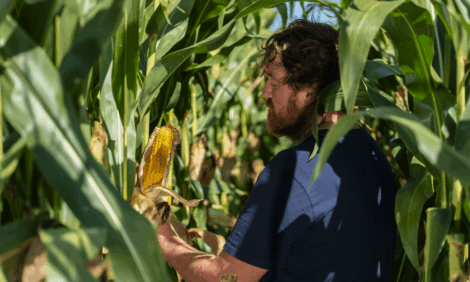



Considering A Replacement Heifer Enterprise?
Kris Ringwall, Beef Specialist with North Dakota State University looks at a replacement heifer enterprise.The feeling that some heifers are too good to sell is a good feeling because it reflects positively on a successful bred heifer programme.
The Dickinson Research Extension Centre (DREC) sold 2-year old replacement bred heifers and 3-year old bred cows.
The bred heifers marketed in late October weighed 982 pounds and averaged $721 per head. The bred heifers marketed in mid-November weighed 1,105 pounds and averaged $925 per head. The bred heifers marketed in late December weighed 1,182 pounds and averaged $1,033 per head.
Three-year-old cows weighing 1,237 pounds were sold in November and averaged $1,076. Cash in, as the banker says. Money coming in is always better than money going out.
Selling bred heifers and cows is a complex enterprise in the overall beef operation. For most producers, calves are marketed in the fall. Heifers needed for replacements are set aside and, essentially, that is the replacement heifer enterprise.
Beef producers need to look at other opportunities. Expanding the heifer enterprise is one of those options. Most beef producers focus on producing feeder calves that end up in the feed yard for finishing.
Adding value and creating more demand for beef is critical. Equally as important is perpetuating the cow-calf business, which opens up the opportunity to create a different demand for the heifer calves born each year.
Traditionally, the demand for steers overshadows the value of heifer calves. Why not give more thought to holding the heifers back, sell those that don't breed as open yearling heifers and sort the pregnant heifers into good, uniform packages for sale to other cow calf producers?
As with any endeavour, there is always a top and a bottom. Heifer development is no different. Mistakes are costly and relatively unforgiving.
For instance, the first set of October heifers was purchased heifers, pasture bred and resold. There really was nothing wrong with the heifers.
The DREC purchased the heifers in early April at $655 per head. Reselling the heifers as bred heifers in late October for $721 only left $66 for any kind of return. The heifers were put on grass from 1 May until mid-October and sold off grass. Only the bulls returned to the ranch.
A simple calculation shows the heifers only returned $12 a month. There is no need to get too complicated with the analysis. The bottom line was cheap grass.
Two mistakes were made with that set of heifers. The heifers never got much of an opportunity to settle down and, hindsight revealed, a few of the heifers were pregnant when purchased.
The point for a producer is that heifer development needs to be done right with no shortcuts. For example, the center's heifers were managed with appropriate synchronization protocols and artificially bred.
The centre’s heifers were accustomed to people and were the product of identifiable parentage and traceable genetics. In the end, there was improved producer demand.
A couple of months in the lots after grazing allowed for the appropriate grouping of the animals and moved the sale date into established and traditional replacement sale activities at the local auction barn. The November heifers that were sold averaged $925 per head, while the December heifers averaged $1,033 per head.
If we appraised these heifers similar to the purchased heifers ($655 per head), the centre added $270 in value to the first set of heifers sold and $378 to the second set of heifers. When done right and a producer is working with the right genetics, producers can add value to heifers.
This is something to think about as one prepares for the calving season. However, just the same, those Simmental-sired and Shorthorn-sired heifers are going to be missed at the ranch.


